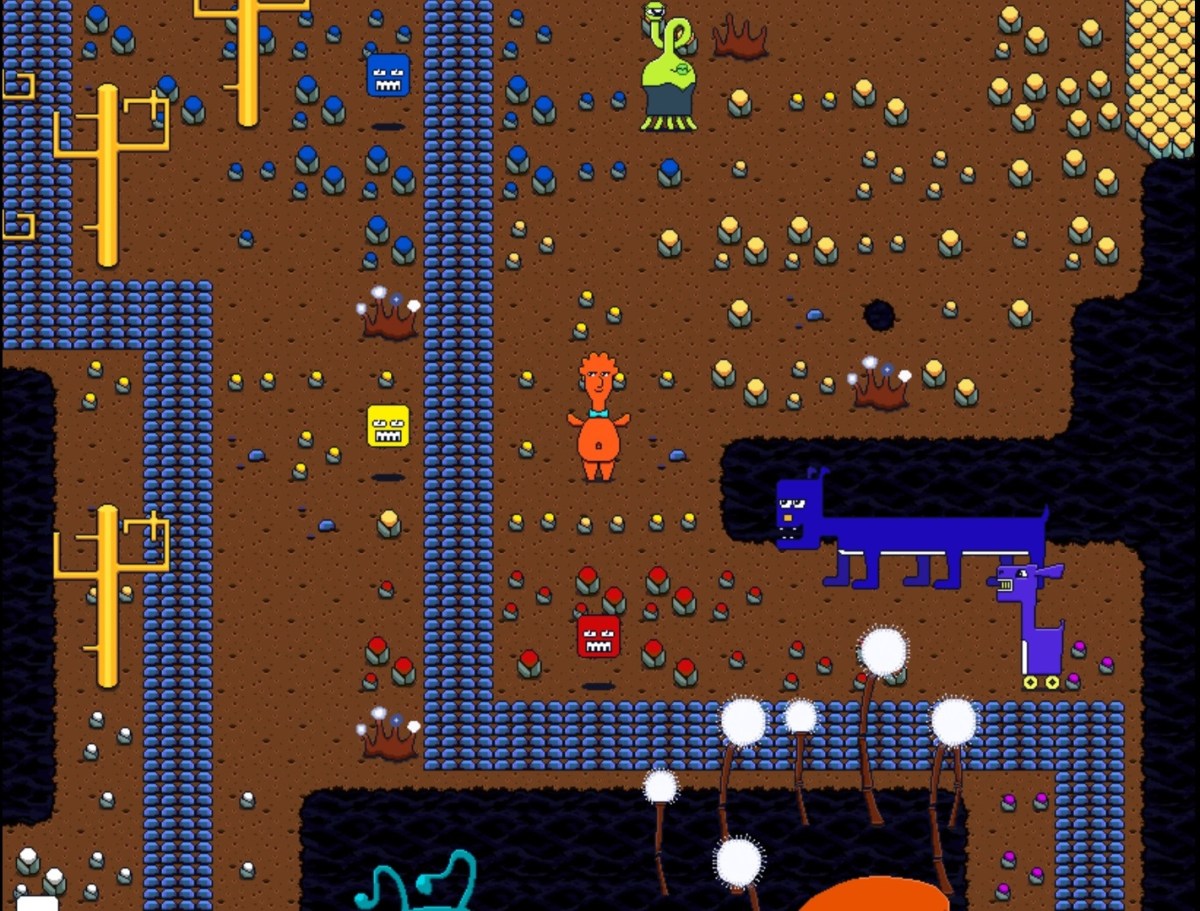All monsters welcome
Monsters get a bad wrap. They’re often ugly things, toothy and violent creatures whose only purpose is to pose a threat to humans. In games, monsters tend to function as disposable roadblocks. Goblins and zombies get slaughtered with impunity just because they stand in the hero’s way.
But maybe there’s more to the monsters’ story. Maybe monsters have feelings too. Maybe monsters are just like us; insecure, conflicted, just trying to make sense of the world they’re stuck with. What if monsters aren’t all that bad? Maybe they just want to hang out with one another and party like there’s no tomorrow.
At least that’s what Zack Wood thinks. The independent developer has an issue with how we view monsters. His first major release, Monster Garden, paints the much-maligned enemies in a much more compassionate light. In Wood’s world, monsters just want to be loved.
“The point is to let monsters be more than just evil enemies or funny pets,” Wood told me in an email before the game’s release. “In a lot of games you play as a hero who has to either fight monsters or decide whether or not to kill them as some sort of moral dilemma. But when I play these games, I want to be the monsters.”
That desire reflects both the core design and actual gameplay found in Monster Garden. Wood’s game has players take on the role of Mr. Bobo, an orange, bipedal creature who sports a sharp blue bowtie. Mr. Bobo’s only desire is to grow the titular garden to a place where all kinds of monsters gather and support one another.
Mr. Bobo’s quest revolves around entering “seedlings” scattered throughout the garden. Each seedling is a portal to a small world populated by different monsters that Mr. Bobo can speak to and attempt to invite them back to the central garden hub. It’s simple in theory — everyone knows how to talk, after all — but Wood’s efforts to create creatures with distinct personalities, and hang-ups, adds an element of conflict in every conversation.
“Each seedling has four or five different monsters that could potentially join you,” Wood said, “and some that you might not even see depending on how you play.”
Mr. Bobo doesn’t have to navigate the Monster Garden alone. With conversational tact, the orange creature can recruit around fifteen monsters to his cause. Players can pick which characters they’d like to accompany Bobo too, allowing party members’ varying personalities to play off one another and interact with monsters in the wild in many different ways. When encountering a new monster, Mr. Bobo and his companions can each try to chat the creature up. After a short introduction, monsters tend to allude to something that’s bothering them. They mention problems at work or softly admit their concerns that no one truly likes them. Every monster, no matter how grotesque or goofy they look, has a problem and it’s up to Mr. Bobo and his friends to lend a helping hand.

This is done mostly through dialogue choices. Mr. Bobo and the party members he can travel with are a dynamic lot, each capable of approaching the wayward monster from a different angle. Mr. Bobo tends to be more direct, urging whoever he’s talking with to push their worries by the wayside and head right to the garden. Foofter, a self-conscious mess of pink fur, uses his insecurities as a means of connecting with others. There’s a great sense of variety to Monster Garden‘s myriad conversational choices, and in many ways picking the “right” piece of dialogue is the closest thing Monster Garden has to a combat system. But instead of slaying a beast, victory just requires you show a few monsters some love.
And love’s an important concept in Monster Garden. Mr. Bobo and his friends often speak of “monster love” as if it were a powerful, abstract force guiding their actions. It’s mentioned as a source of inspiration and encouragement; something passed from monster to monster as a means of overcoming life’s stressors. To Wood, monster love is more than just term to be tossed around; it’s emblematic of his design sensibilities and personal beliefs.
“Monster love means making it possible to interact with monsters in a positive way, like becoming friends,” he said, “but it also means making monsters more autonomous.”
So while the in-game use of the term allows Wood’s characters to have such wild personalities, it is also meant to be applied to our daily lives.
“On a more abstract level, I think that monsters represent the ‘unknown’ in general,” Wood explained. In his eyes, monsters are treated poorly because they’re not human. We seek to banish the unknown, both in games and in real life, because it’s a hindrance to our routines. “In that sense, monster love is an alternative approach that involves embracing and exploring the unknown instead of trying to control and destroy it.”

It only takes thirty minutes to complete Monster Garden, but there’s plenty of reason to revisit the game multiple times. Mr. Bobo’s journey can unfold in a number of ways, depending on which companions he brings and what dialogue choices players select. Wood says that there’s no real “right way” to play and encourages people to take multiple trips to the garden to get to know each monster.
Monster Garden’s cast is completely devoid of humans, but after growing two gardens to completion, it’s safe to say that it’s brimming with humanity. Mr. Bobo, Foofter, and the rest of Wood’s monsters are lively, lovable, and accepting of one another’s flaws. It’s a relaxing game more than capable of eliciting a few smiles in its short runtime.
“I hope 2018 becomes the year of the Monster,” Wood said. And with his game finally released on Steam and Itch.io, it’s time to let the monster love grow.





Published: Feb 8, 2018 12:00 pm